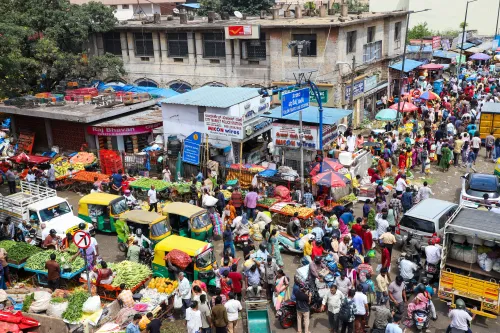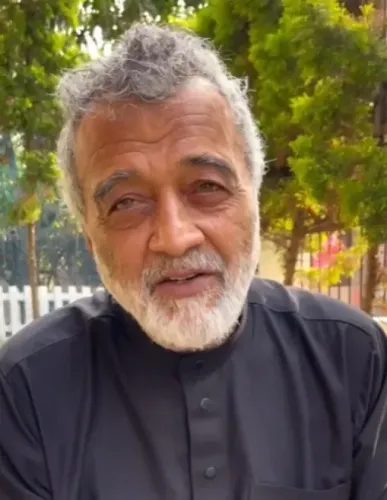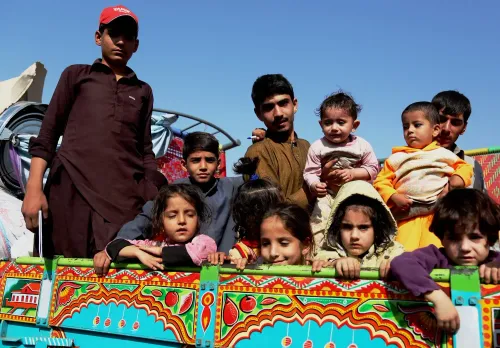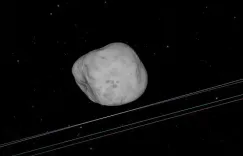Why is Govardhan Puja So Special in Mathura?
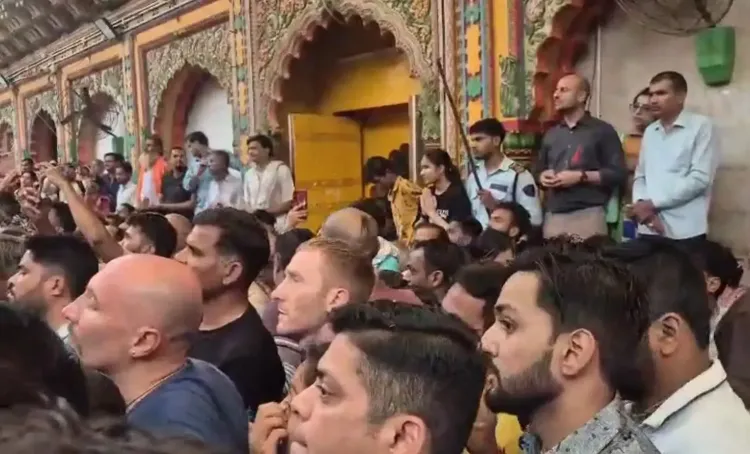
Synopsis
Key Takeaways
- Govardhan Puja is celebrated in Mathura with great fervor.
- It commemorates Lord Krishna's divine act of lifting the Govardhan mountain.
- Devotees offer 56 varieties of food as a form of gratitude.
- The festival highlights the importance of faith and respect for nature.
- Govardhan Parvat has become a vital pilgrimage site.
Mathura, Oct 21 (NationPress) The auspicious festival of Govardhan Puja was observed with great enthusiasm and devotion in the holy city of Mathura, Uttar Pradesh, on Tuesday. A significant puja was conducted at the esteemed Dwarkadhish Temple, where numerous devotees gathered from the early hours to partake in the sacred rituals.
This festival bears immense importance in Mathura, the land intertwined with the divine exploits of Lord Krishna, as it marks the occasion when He lifted the Govardhan mountain with His little finger to shield the people of Braj from the fury of Indra, the rain god. In alignment with tradition, devotees respectfully crafted a representation of the Govardhan mountain using cow dung and offered their prayers within the Dwarkadhish Temple grounds.
Govardhan Puja, an essential Hindu festival that takes place a day following Diwali, celebrates the 'Baal Roop' (child form) of Lord Krishna and is also referred to as Annakut or Annakoot, translating to 'a mountain of food'. On this day, devotees honor Govardhan Parvat (hill) by presenting 56 varieties of vegetarian dishes and sweets, known as 'Chappan Bhog', signifying their gratitude and devotion.
The festival exemplifies the profound connection of faith, protection, and divine grace between the deities and their devotees. The narrative of Govardhan Puja imparts lessons about respecting nature and recognizing our reliance on Mother Nature's blessings. Lord Krishna's act of lifting the mountain and safeguarding the villagers signifies that bhakti (devotion) is the most sincere path to divinity.
As per the tale, Lord Krishna sheltered all living beings of Gokul beneath the vast Govardhan mountain. The essence of Govardhan Puja lies in devotees' unwavering faith in their Lord, trusting Him to safeguard them in all adversities.
According to the Vishnu Puran, young Krishna once asked his mother, Yashoda, why the villagers worshipped Indra. She explained that Indra was the deity responsible for rainfall. Krishna disagreed and persuaded the villagers to cease worshipping Indra, urging them instead to honor Mount Govardhan for its vital contributions to their lives. The villagers, respecting Krishna's wisdom, complied.
Furious, Indra commanded Varuna Deva (the rain god) to unleash a deluge for seven days as punishment. Faced with devastating floods, the people of Gokul sought Krishna's aid. In response, Krishna uprooted the Govardhan mountain and held it aloft on His little finger, providing refuge for all beings—humans, animals, and birds.
After enduring a week of relentless storms, Indra recognized Krishna's divine nature and conceded defeat, acknowledging Him as an incarnation of Lord Vishnu. Since then, Govardhan Puja has been celebrated as a tribute to nature, humility, and divine protection.
'Govardhan Parvat' has emerged as a pivotal pilgrimage destination for Lord Krishna devotees. On Annakut day, thousands of devotees undertake the 'Parikrama', an 11-mile sacred circumambulation around the mountain, offering flowers, diyas (lamps), and food at various shrines along the way.

